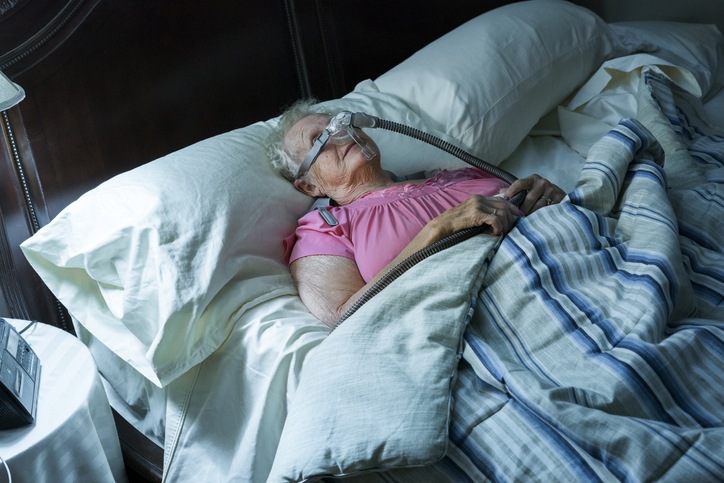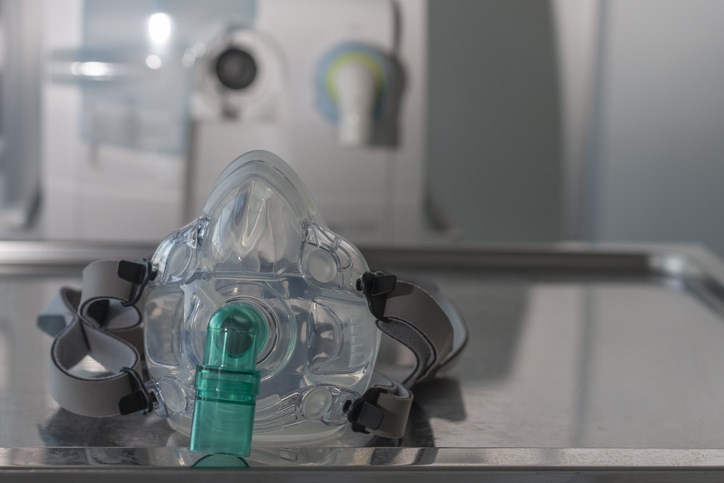
During a live discussion at the CHEST Annual Meeting 2020 titled “Sleep Disorders – New Insights Into the Relationship Between OSA and Cardiovascular Disease,” Alexander Villareal, MD, a sleep physician from the Gundersen Health System in La Crosse, Wisconsin, discussed the effect of positive airway pressure (PAP) adherence on readmission and hospital length of stay (LOS) in hospitalized patients with severe obstructive sleep apnea (OSA).
“OSA is prevalent; about 1 billion people suffer from it worldwide,” Dr. Villareal said—including about 26% of the U.S. population. “Numbers are getting higher because of increased obesity, aging, and awareness.”
“Additionally, one in five Medicare patients are readmitted within 30 days of being discharged from the hospital. OSA increases the risk for readmission,” he said.
PAP is currently the preferred treatment for severe cases of OSA. Readmissions are costly—and hospitals with excessive readmissions may suffer financial penalizations. “Therefore, we asked ourselves if adequate PAP adherence affects readmissions or hospital LOS in people with severe OSA,” Dr. Villareal explained.
He and his colleagues retrospectively reviewed admissions data from January 1, 2014, through December 31, 2018, on patients aged ≥18 years with an available sleep study report in their electronic medical record that showed OSA as well as PAP adherence.
A total of 10,996 readmissions were identified; after exclusions, 2,419 were included in the retrospective analysis. The mean age was 67.6 (standard deviation, 13.4) years, and the cohort was mostly male (64.5%) and white (97.8%).
“Although most hospitalized patients were not adherent to PAP therapy, they used it during admission. OSA was very severe overall, with a mean Apnea-Hypopnea Index of 64.6 events per hour,” Dr. Villareal said.
“Regarding the main diagnoses associated with the hospital admission, half were related to the circulatory, musculoskeletal, and respiratory systems. Patients who were non-adherent were more likely to have coronary artery disease, congestive heart failure, and diabetes. There was no difference between the two groups for other comorbidities,” he continued. There was also a correlation between non-adherence and current tobacco use.
When examining PAP adherence variables between adherent versus non-adherent patients, only one was clinically significantly different: PAP use during admission (82.2% vs. 37.4%; P<0.0001).
Regarding the main outcomes, “patients who were adherent to their PAP treatment had significantly shorter LOS, by 0.6 days of a difference, and significantly less 30-day unplanned readmissions. The absolute risk reduction was 4.2%, and the number needed to treat was 23.8,” Dr. Villareal said. Factors independently associated with unplanned readmission were diabetes (P=0.0228) and PAP non-adherence (P=0.0059).
“Our study strengthens the evidence that adequate PAP adherence in people with severe OSA results in shorter LOS and less hospital readmissions. Additionally, non-adherence [was] associated with a higher risk for current tobacco use and non-use of PAP during the hospitalization,” Dr. Villareal concluded.







 © 2025 Mashup Media, LLC, a Formedics Property. All Rights Reserved.
© 2025 Mashup Media, LLC, a Formedics Property. All Rights Reserved.